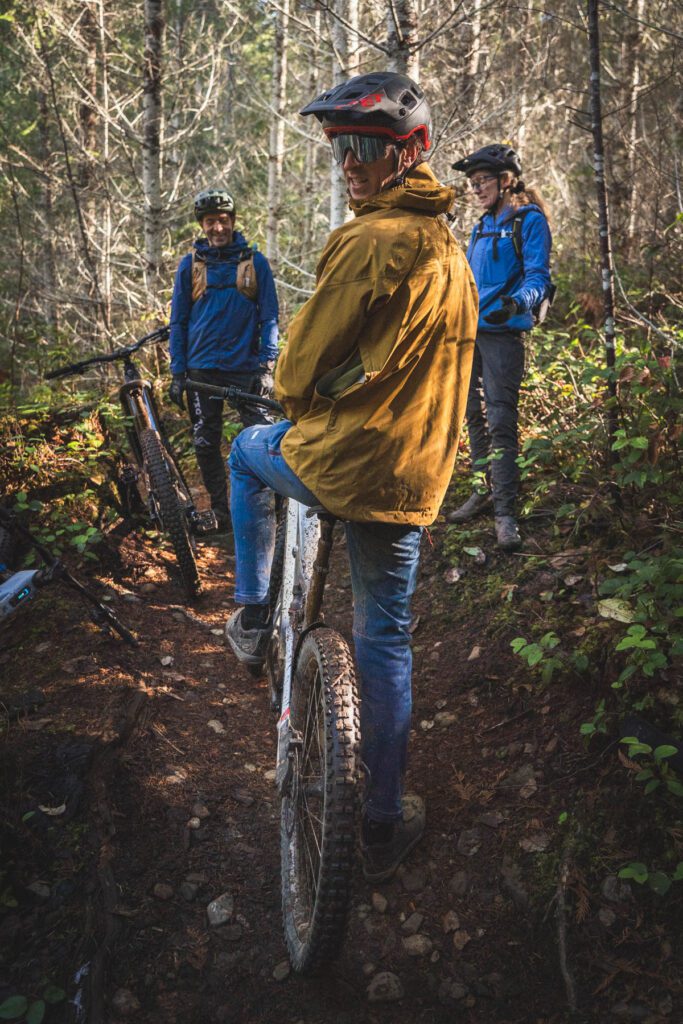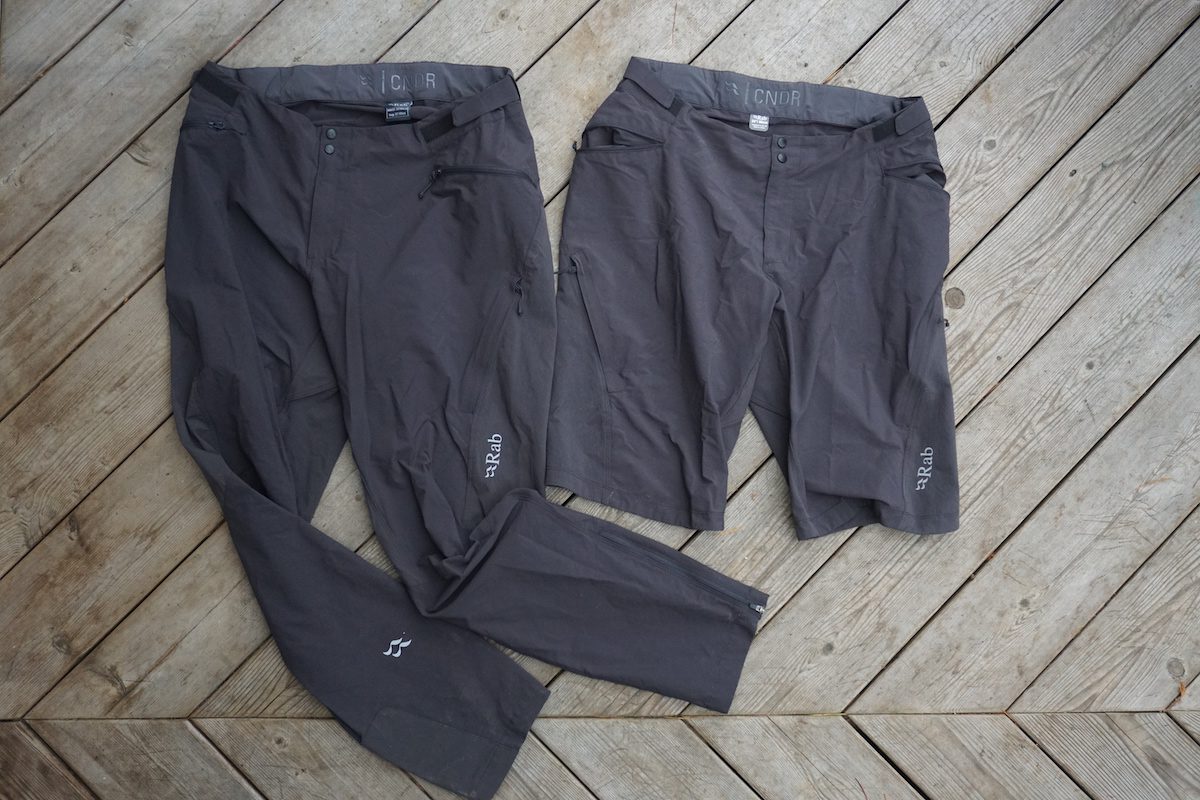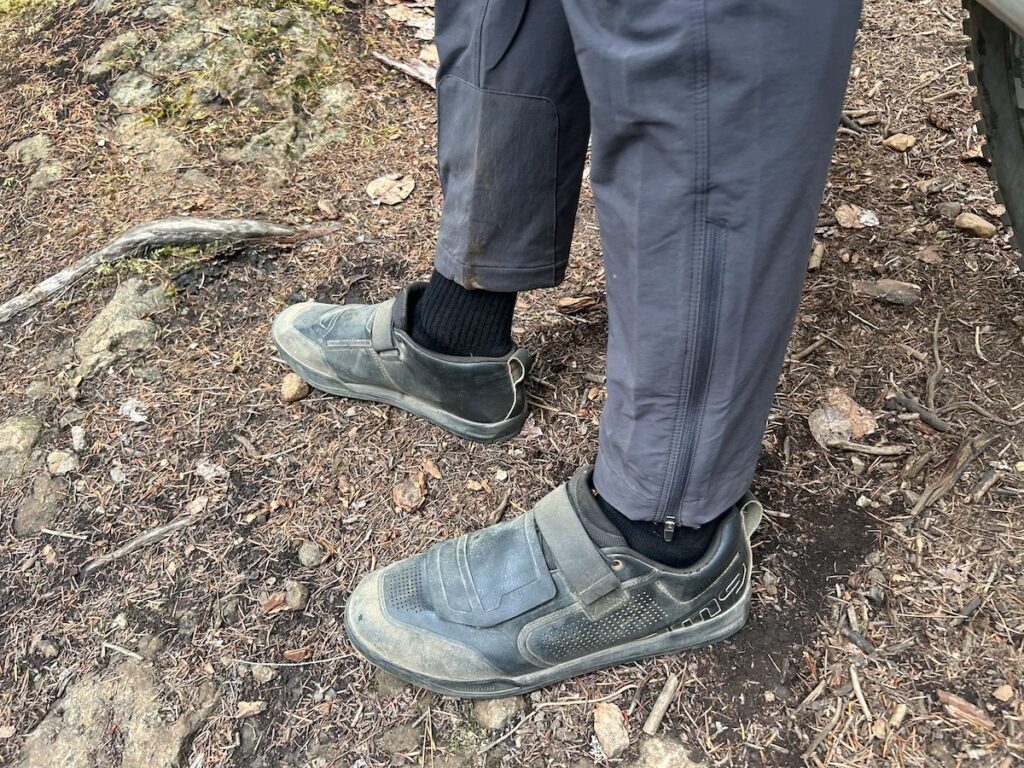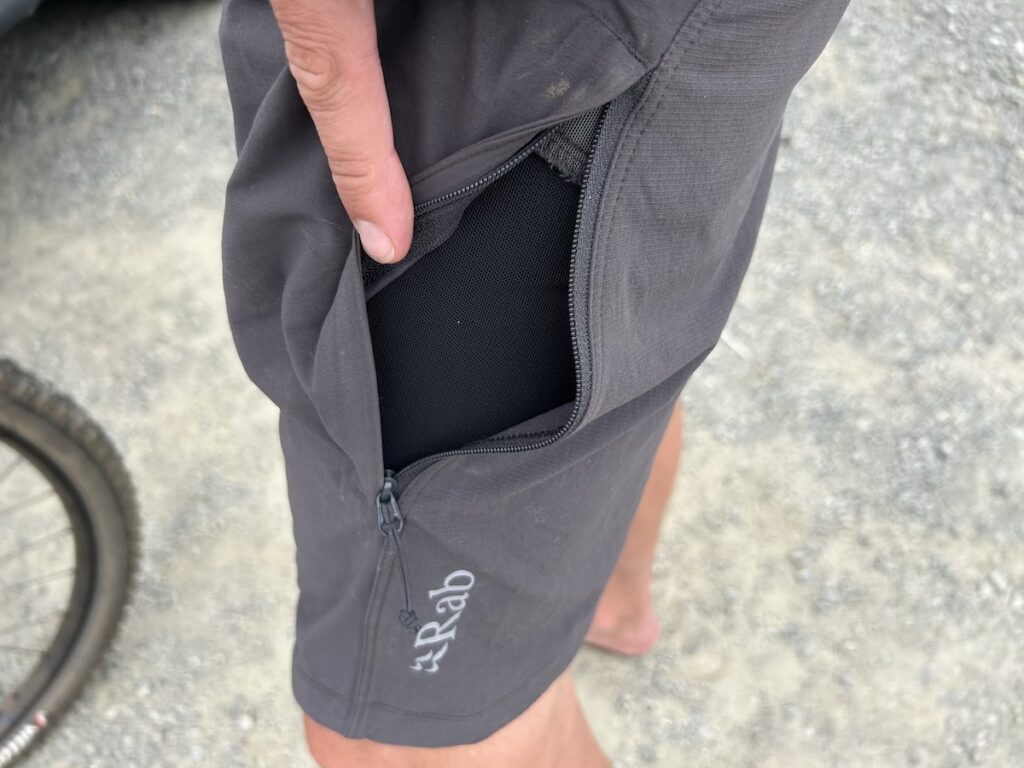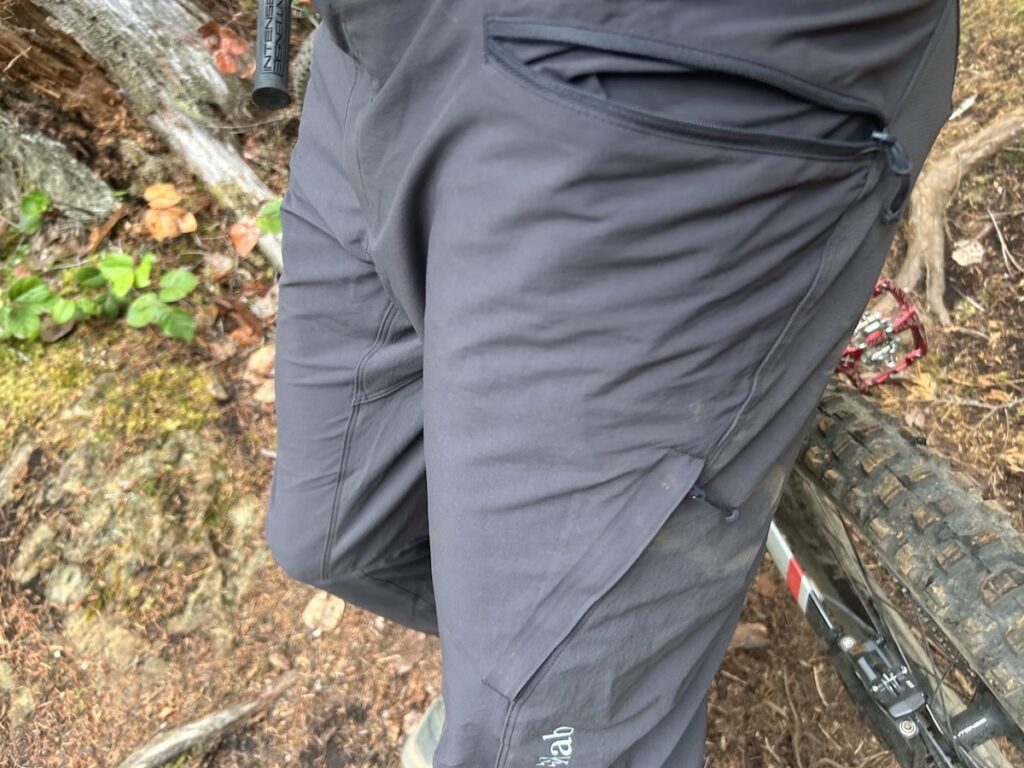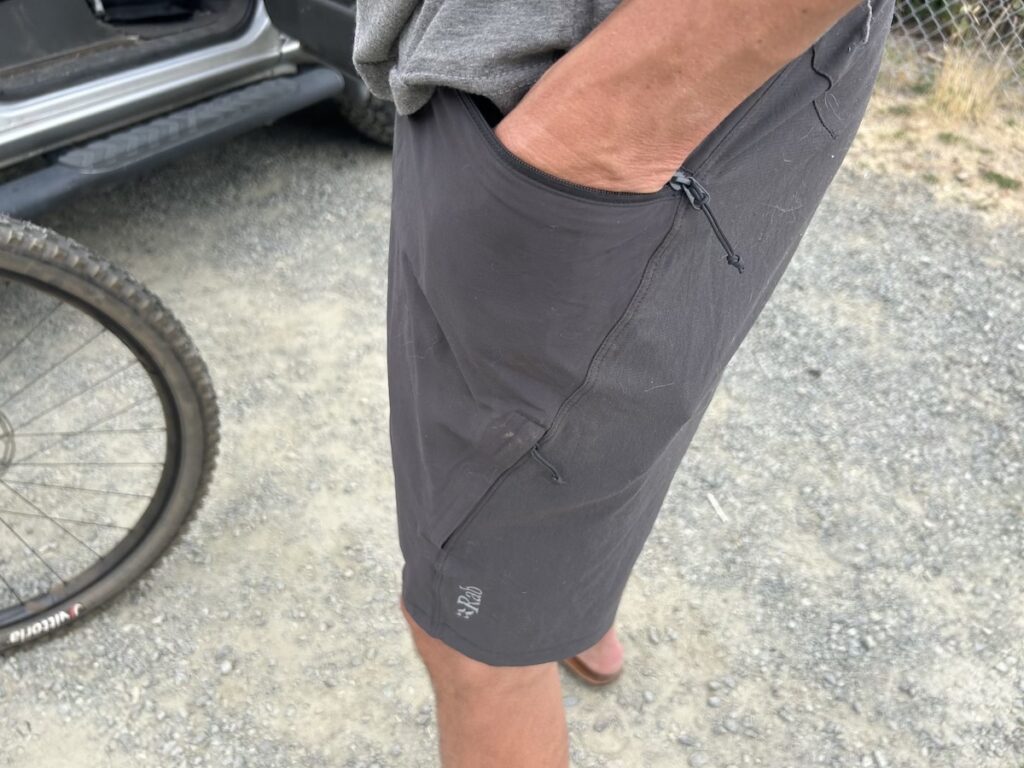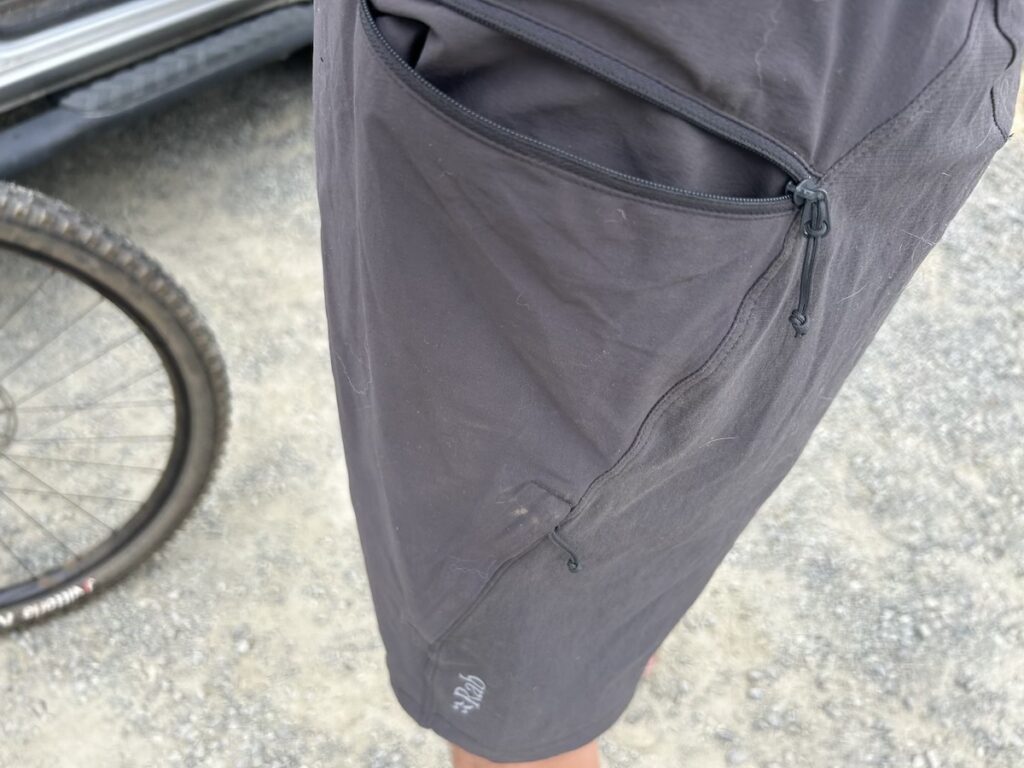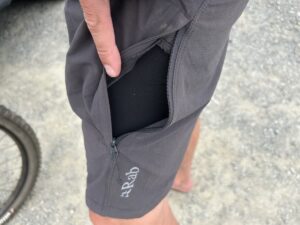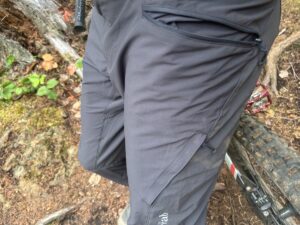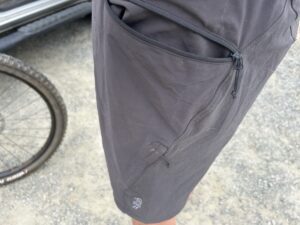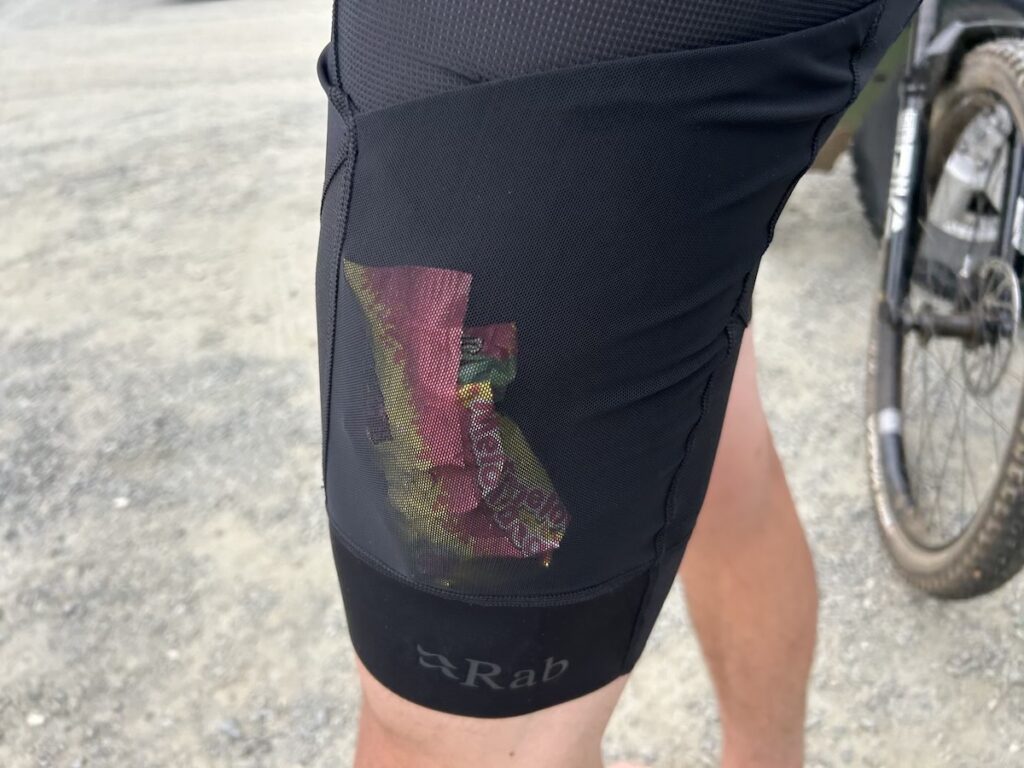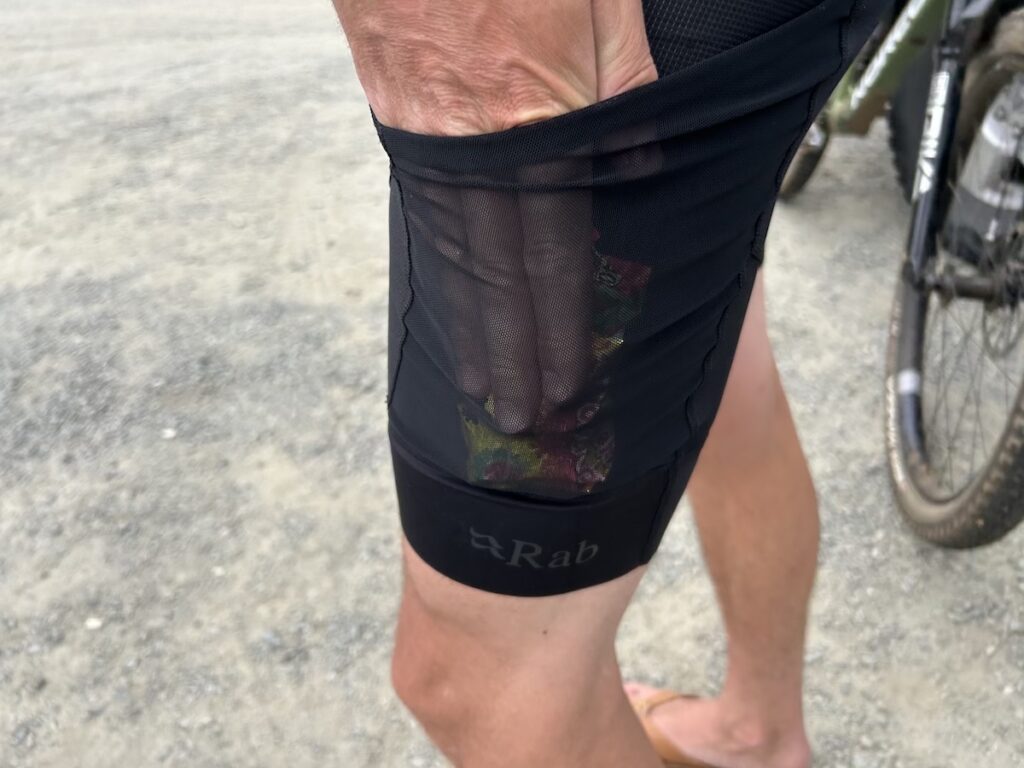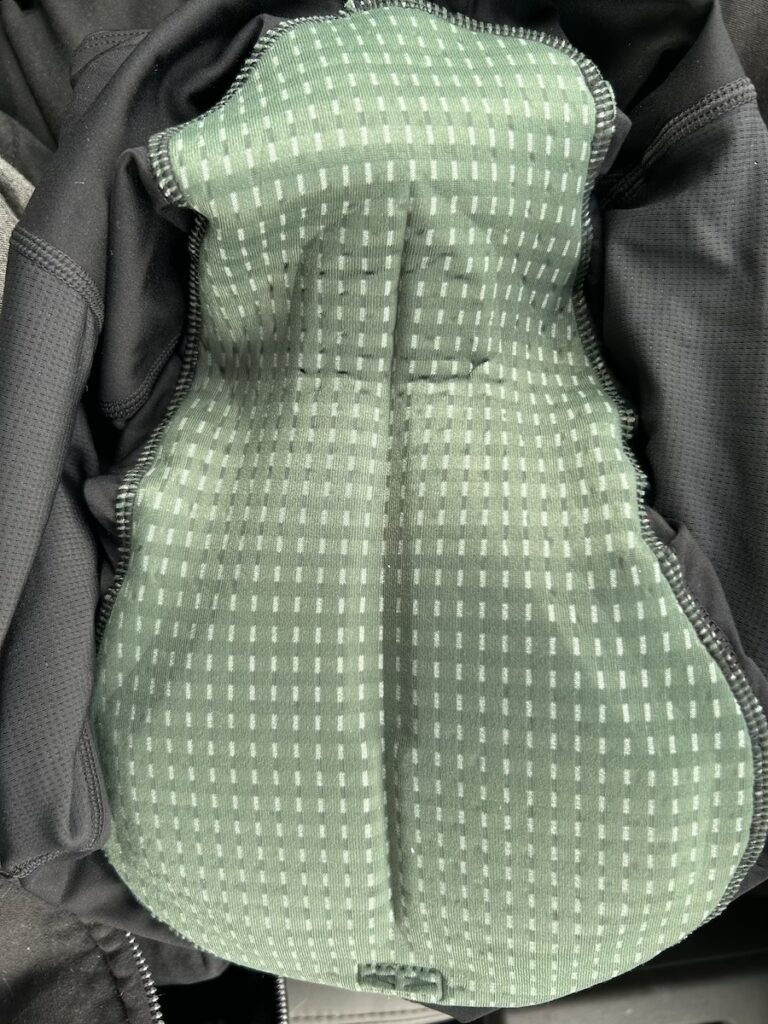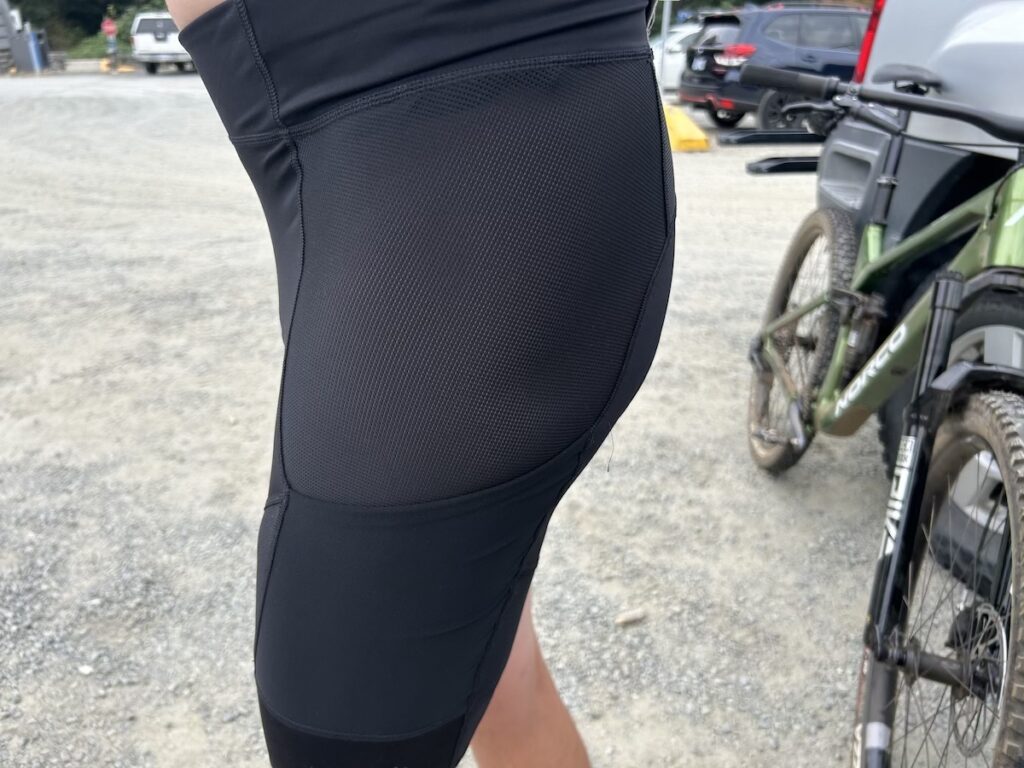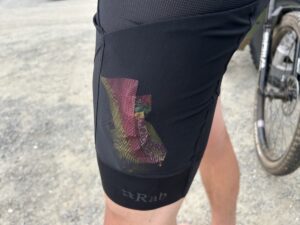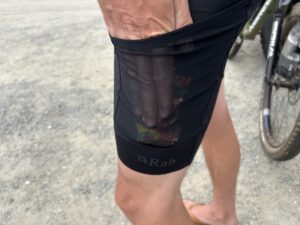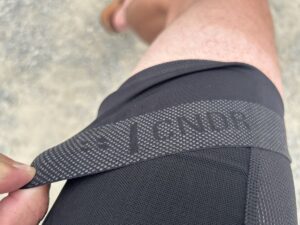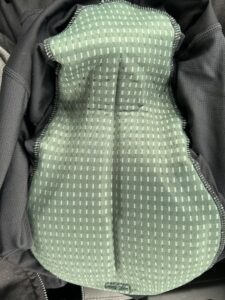Review: Rab Cinder brings U.K. mountaineering brand into cycling with momentum
Highlights and a few mixed features from a solid first effort
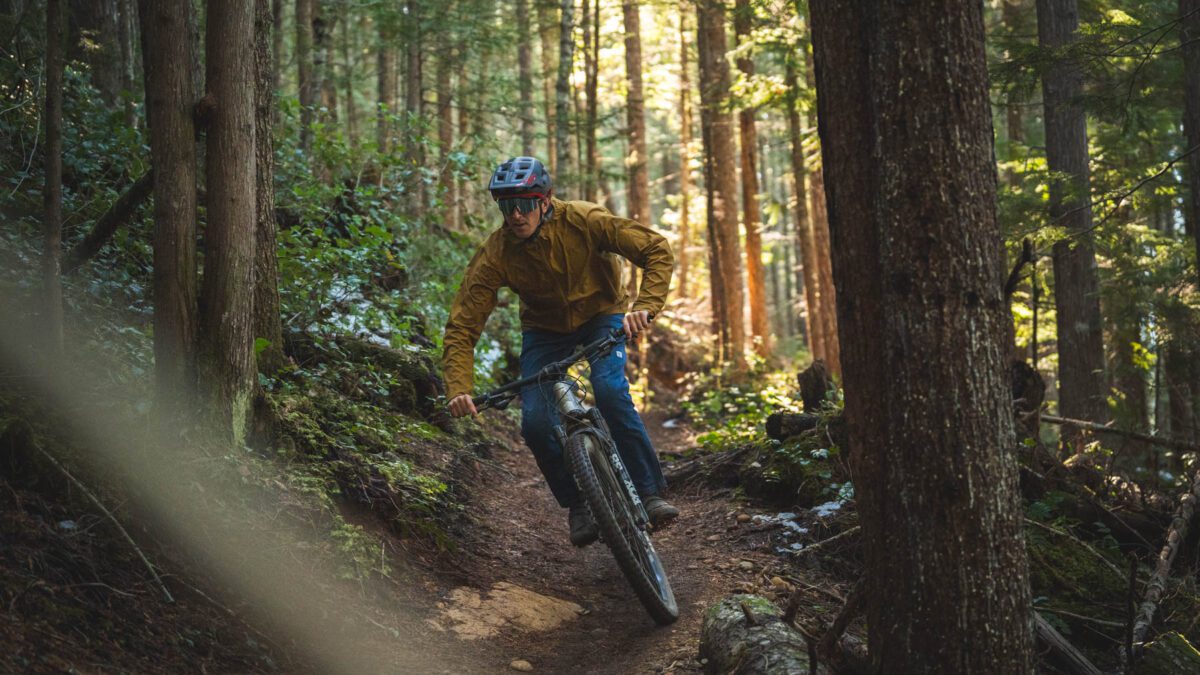
When British mountaineering brand Rab waded into the world of cycling apparel, it caught my attention. Rab isn’t the first brand to try cross over, some with more success than others. But, having tried Rab’s gear for activities closer to its origins and having found it to be very smartly designed and well made, I was curious to see what their take on off-road riding would be.
I say “off-road” because Rab targets a wide range of riders with its Cinder line. Gravel, bikepacking and mountain biking and basically anything where you’ll be exposed to the elements while spending long periods of time in the saddle. There is some spandex in the Cinder line, if you want it, but there are also numerous less form-fitting options.
RELATED: First look at the Rab Cinder clothing line
My first experience with Rab’s Cinder cycling wear is mostly positive, even if the review a bit mixed. I’ve spent half a year riding an array of gear from Rab. That is mostly on dirt, despite Rab targeting the vague “adventure” market, but with many long days in the saddle and plenty gravel thrown in the mix.

Rab Cinder Downpour Jacket
Let’s start with the good. Or, more accurately, the very good. Rab’s Cinder Downpour Jacket.
Rab actually makes four jackets in the Cinder line. The Kinetic is the top-of-the-line, Phantom is an ultra-lightweight and Vapor Rise is warmer for winter riding. That leaves the Cinder Downpour as a do-it-all waterproof jacket and the second most reasonably priced at $285. The Downpour is a mix of lightweight, packable, waterproof, very windproof and breathable. With two large pockets, and an under-the-helmet hood and zippered under-arm vents, it is a full-featured jacket that can also be easily stowed away when the clouds disappear. It comes in five sizes and three colours each in men’s and women’s versions.
Rab uses the Pertex Shield, a Fluorocarbon-free fabric that is incredibly waterproof. This jacket has kept me completely dry through some of the wettest days I can remember on the bike, and heaps more off-bike precipitation, this fall. It also feels light to ride in and, with the help of pit vents, breathes well. Since it is also very windproof, it’s been great even on dry days when riding up to higher, more exposed elevations and for the higher speeds of gravel riding.
While I’ve appreciated this jacket many times this fall, one particularly memorable trail day in the U.K., when the skies opened up and winds were howling, stands out. That can be a brutal combo if you’re not dressed right, but I was comfortable and warm enough to stay focused on surviving the morass of greasy rocks and roots on the trail in front of me. Pulling off the jacket in the car I was honestly amazed to see my shirt was still bone dry.
Fit and sizing
Fit on the Downpour was slightly roomier than I’d expect from Rab in a size large. This leaves room for layers without feeling like it’s billowing about in the wind and made sure the sleeves actually covered my wrists. But, if you want a tighter fit for the more roady side of gravel riding, maybe check Rab’s size chart to see if you can size down.
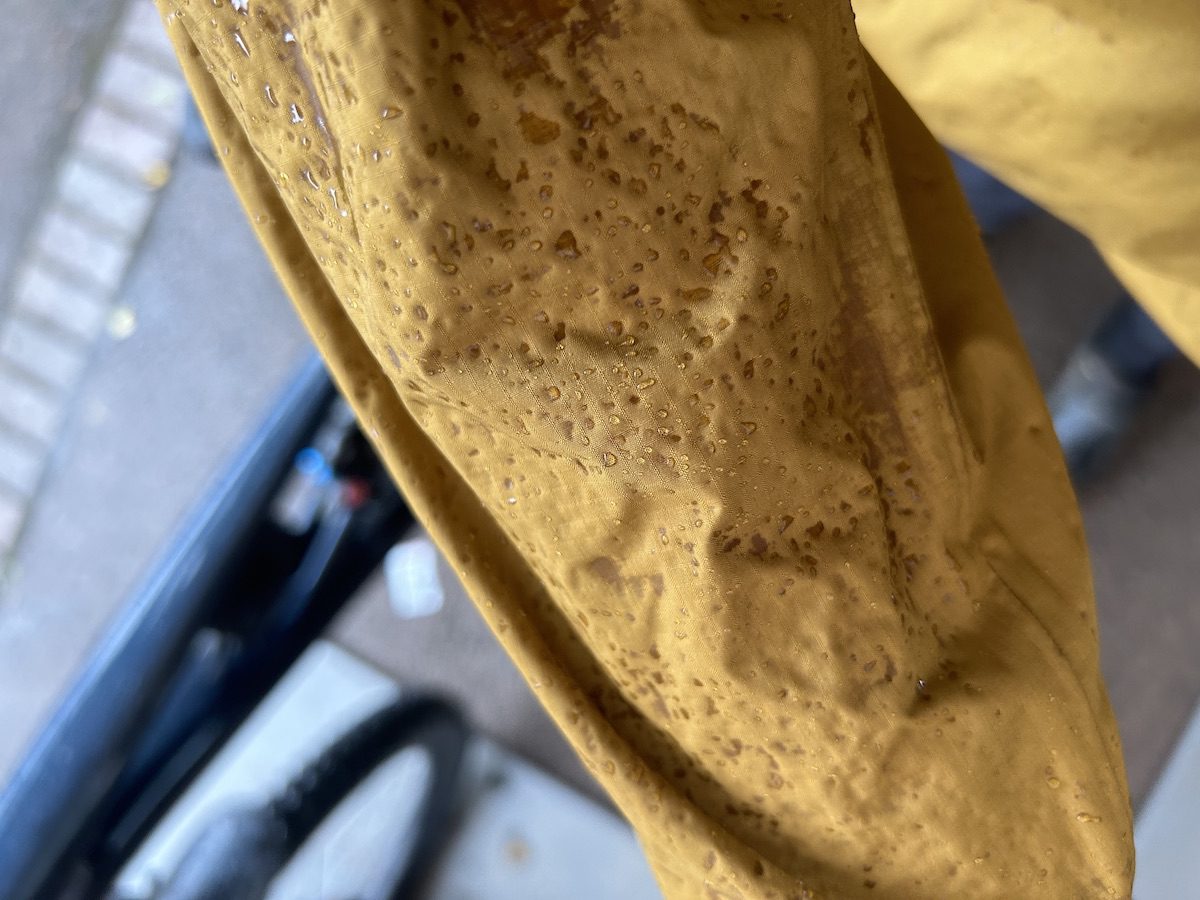
Pertex Shield
A tiny part of that amazement was because the Pertex Shield does have a different feel to some other waterproof jackets. Because there’s no lining layer on the inside, to help keep the jacket light, it can feel cool when first putting it on. The Pertex Shield also functions a little differently than I was expecting based on other, DWR-treated fabrics. Instead of precipitation beading and rolling off the jacket, the first drops form what looks like tiny craters on the shell’s surface.
Rab, when asked, explained that this dappling behaviour is basically the membrane swelling before expelling moisture. More rain, or a chance to dry, does bring the jacket back to an even surface. While it looks different at first, I want to repeat that this has had no effect on the Cinder Downpour’s function. The jacket has yet to soak through, or let any moisture in at all, even on long days in the rain mixed with muddy trail spray.
Rab nails the details on the Downpour too. The hood and cuffs use a mix of stretchy material and smooth brim to keep water out and fit tight. The drop-hem has some silicone grip to help keep it from sliding up while riding and the hood and hem both have cinch cords that can be tightened with just one hand. I did find the large front pockets were positioned slightly higher than I’d expect. But I appreciated their volume, with enough space to store more stuff comfortably, and they weren’t so high as to be awkward.
Rab Cinder Crank Pants and Shorts
For the lower half of Rab’s Cinder line, I opted to stay away from spandex, mostly and try the Cinder Crank pants and shorts. Like jackets, Rab offers several options for more waterproof pants. Since these were arriving mid-summer (and mid-drought), I opted for the lighter, just wind-resistant Crank option.
While the Downpour jacket was outstanding, my experience with the Crank pants and shorts was more mixed. There is a lot of good, but with a common quirk around pockets.
Fit and comfort on both are great. Rab offers five sizes, from 28″ to 36″ in two-inch increments. The pants also come in three lengths: short, regular and long. As a lanky human, I really appreciate this touch. Really, I think it should be standard on any riding pants.
Rab uses a lightweight and wind-resistant Matrix and Matrix RX softshell fabric for the shorts and pants. It feels light, soft and is comfortable for long rides and has proven durable so far. Both are reinforced in the crotch to prevent wear from the saddle. The pants add more reinforcements on the inside of the ankle. The pants also add zippered ankle gussets for a trim fit that you can still get on and off over shoes if needed. Both also use zippered thigh vents that add an easily perceptible level of temperature regulation on warmer days.
Pocket problems
So far, so good. Then I tried to use the pockets and things got weird. The pockets on both shorts and pants look like they are a reasonable size but functionally they feel tiny. The way they line up with the zipper and the way they sit while in the saddle make them next to impossible to access while riding. Or even while seated on the bike not moving. On mountain bikes, it was bad. The more aggressive posture of drop bar bikes only made this problem worse.
This made getting keys or even a snack bar into or out of the pockets a consistently frustrating experience. A phone was near impossible. The mesh construction and awkward pocket angle also mean that when you do succeed in stashing something in the pants, pulling it out brings the whole pocket with the item.
Rab’s pants and shorts are comfortable and light enough that I still ended up wearing both quite often, but only on rides where I knew I would have a pack with me and didn’t need to put anything in the pocket that I might need access to. It is unfortunate that the otherwise excellent design on both is held back by pockets, but at least it should be an easy fix for Rab for the next version.
Rab Men’s Cinder Crank Pants are $210. The Cinder Crank Shorts are $170 and come in men’s and women’s versions, though the women’s have different (possibly better) features. That pricing is not bad for the quality, coming in under the recent mountain bike efforts from a comparably high-end brand like Rapha.
Cinder Liner Shorts
The last item is Rab’s cargo liner shorts. I’ve been off of chamois for even mid-length mountain bike rides lately. These liners have me reconsidering that choice. They are a comfortable and breathable alternative for anyone trying to avoid both bib shorts and saddle discomfort. The liner shorts have two sizable storage pockets, one on each thigh. These are easily accessible through the Crank short and pants thigh vents (which is good, since their own pockets are not great).
Rab uses a Elastic Interface Gravel Performance HCS chamois for the Cinder liners. That seems to mean that it is a low stack-height chamois that mixes comfort with freedom to move around on the saddle. This proves true on the trail. The Cinder’s provide comfort without feeling as bulky around the undercarriage as some road-focused chamois can.
Chamois shorts aren’t always the most comfortable. Rab avoids any pinching or bunching by using a wide, soft waistband. The thicker material can get a little sweaty on the hottest days, but that’s a cheap price for the level of comfort the waistband delivers. Silicone thigh grippers keep the legs from riding up without taking leg hairs with them.
Rab offers the Cinder Liner Shorts for $155 in men’s and women’s versions, both in five sizes from XS to XL.
Review: Rab Cinder is off to a very solid start
Rab’s first effort in the world of cycling is impressive. The clothes are functional, well made, comfortable and show great attention to detail, aside from the pants/shorts pockets placement. Rab’s Cinder Downpour jacket is a standout. Showing that more competition from different brands can be good for riders (and their wallets) Canadian pricing from the U.K. brand is reasonable compared to some more established high-end cycling-specific brands. This is especially true for the Downpour jacket given its level of features and outstanding function.
